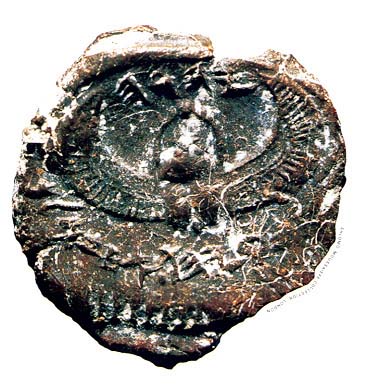Image Details

Shlomo Mousaieff Collection, London
Phoenician or Egyptian? The seal of Hezekiah, king of Judah from c. 727 to 698 B.C.E., left its mark in this bulla—a small lump of wet clay used to secure a document. It reads, according to Meir Lubetski, author of the accompanying article, (see “King Hezekiah’s Seal Revisited”), “Judah, Belonging to Hezekiah, son of Ahaz, King!” Hezekiah and Ahaz are the only kings of Judah whose seal impressions have been recovered. At center a two-winged beetle, or scarab, pushes a tiny ball of dung. Why did Hezekiah pick a scarab to represent himself? Two years ago in BAR, Frank Moore Cross argued that the Egyptian-style imagery came to Judah by way of Phoenicia. Lubetski believes instead that the imagery came directly from Egypt and that Hezekiah used this beetle in an effort to align himself with the pharaoh.
